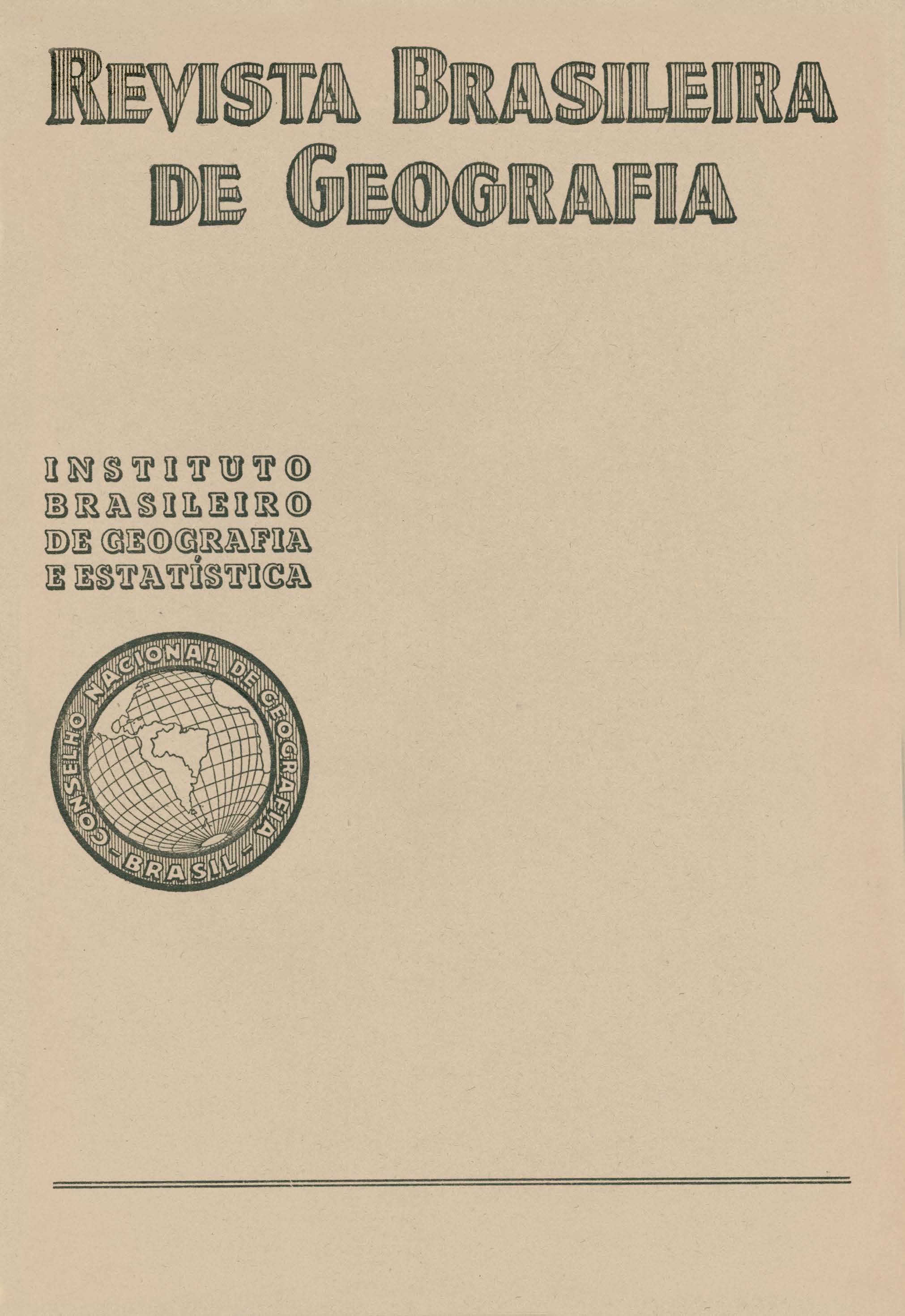Geografia urbana e sua influência sobre o saneamento das cidades
Resumo
Continuing with his articles on Urban Geography, Engineer Jeronymo Cavalcante analyses its influence on the sanitation of the cities. In the plan of a city prevision and the previous program of a convenient service of water distribution, sewage system and final disposal of used matter is indispensable, owing to the importance of fresh water in regard to urban health. "The existence of life is correlated to its presence" affirms the author. In a water supply project of a city, studies are based on the topography of the land, on the water sources, and on the hydrographic basins, all of which are truly geographic factors.
He studies the water supply of the city of Salvador (Baia), which was done without a previous plan.
Next he cites the work of Eng. Teodoro Sampaio (1904) and states that in the city mentioned, of uneven terrain, the topographic factor - altimetry - was the decisive condition in the solution of the problem. He enters into the technical details of the Saturnino de Brito plan, which shows the connection with Urban Geography, through the factors: level, locality and nature of the soil.
The second case analysed is the supply of Natal (Rio Grande do Norte), which differs from those of the majority of Brazilian cities, for it makes use of the underground water. Natal, like the Northeastern region of Brazil, suffers from shortage of water owing to periodical droughts.
Thanks to a geological determination that was the most consistent solution, eliminating chemical tretment, filtering and a lengthy pipe-line. The annual rainfall of 1.600 mm, which seeps through a vast sand bed resting on a calcareous layer 10 km wid by 30 to 50 m deep, and Iying again on another of sandstone 20 km and 108 m, guarantees in a safe manner the water needs of the city.
"The technique used, the demonstration of the possibility of supplying underground water within certain zones of the northeastern region, explains the subordination of man and his needs to the scope of Human Geography".
He goes on to say that the geographical factors - altimetry in Salvador - and – geological constitution (in Natal) - are established.
There is now lacking the study of the hydrographic basins, which is to be found in the supply of Fortaleza (Ceará). As a basis to its improvement (Luiz Vieira plan) there was need to survey the capacity of the supply basin, with the hydrometric study of the elements: catchment area, absolute mean rainfall, average surface yield, evaporation losses, capacity of accumulation and of regulating. These are funccions of the nature or the soil, inclination of the land contour, mean yearly rainfall, degrees of temperature and of saturation of the atmosphere, topographic amplitude of the hillsides and forestation of the region. After the technical studies of the plan, he ends by saying that the geographic factor suggested three solutions – new water lines alongside the existing ones, mechanical pumping and a complete re handling of the line.
Speaking about the supply of Limoeiro (a town in the State of Pernambuco), the studies of which were made by the author, he says that in spite of being built on the margin of the Capiberibe River, the town cannot make use of its water, owing to the bad quality, nor can it fetch the water from underground, for the town rests upon a crystalline complex of the Ceará series. - Hence his utilizing the water of the Serigi River, distant from the town.
"From the studies of the water supplies of Salvador, Natal, Fortaleza and Limoeiro one observer the close connsetion will the geographic scheme of the habitat, which connection is undoubtcdly a categoric demonstration of Humboldt's Law of causality".
Jumping to another series of considerations, which have to do with the floods of the Federal District in heavy rains, he mentions that the observer who takes into account the orographic conflguration of Rio and watches the inclines facing the city will at once feel what is going to happen in the plains with the fall of a few hundreds of millimetres of rain. The calamity is enhanced when it coincides with a· high equinoxial tide. Apropos of this he affirms "the problem of Rio has been attacked with object of fighting the evil, whereas, in reality, what is needed is to suppress the cause". The ideal solution would be to retard the flow in the upper and medium parts of the basins, and hasten it in the lover. The building of weirs on the hill sides and of sand boxes, filters, deposits of solid matter and a pluvial drainage system in the lowlands. To complete the system of defense - a circular canal to detain the solid matter which comes down in great quantity from the hills during the downpours. He presents, as being of interest, the plans of Felipe dos Reis, Duffier and Ruchdi Salhab. He concludes that the study of the supply to the cities of drought and that of floods to the cities of rain takes us, through with different objects, to the damming of water.
In the former the reservoir must always be kept full, in the expectation of a drought,. In the latter· they must be forever empty waiting for a flood. He ends by affirmning that "problems of sanitation, ·in other words the foundation of urban structure becomes thus a function of the environment, which is the same as saying: Urbanism continues to depend entirely upon Urban Geography"






